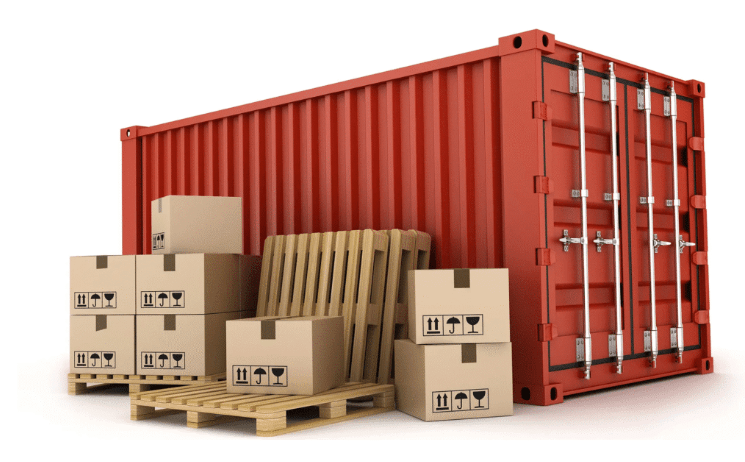
Behind Every Container, There’s a Business Dream
Every shipment tells a story.
A growing brand breaking into a new market.
A manufacturer racing to meet deadlines.
A retailer preparing for their biggest sales season yet.
But between your products and your customers stands a major logistical hurdle: shipping costs—specifically, the cost of moving a 40-foot container from China to the USA.
If you’ve ever found yourself frustrated by wildly fluctuating freight quotes, hidden fees that blow your budget, or shipping delays that jeopardize your timeline—you’re not alone.
Understanding the real cost structure behind container shipping isn’t just about saving money.
It’s about taking control of your supply chain, protecting your margins, and delivering on your business promises.
If you’re unsure where to begin, here’s a clear guide on how to ship from China to USA—from cost factors to route planning.
In this guide, we’ll break it all down clearly:
- What drives the cost of shipping a 40ft container?
- How much you should expect to pay in 2025?
- How to budget smarter and avoid nasty surprises?
Let’s dive in—and turn shipping from a risk into your competitive edge.
Why the 40ft Container Is the Backbone of China-USA Shipping
Why Most Businesses Choose 40ft Containers
When it comes to ocean freight, 40-foot containers dominate global trade—and for good reason:
| Factor | 40ft Container Advantage |
| Volume | ~67 cubic meters—double the space of a 20ft container |
| Cost Efficiency | Only ~30–50% more expensive than a 20ft, but holds 2x more |
| Logistics Standardization | Optimized for ports, trucks, and warehouses in the USA |
| Priority Treatment | Preferred loading by carriers, faster scheduling |
Pro Insight: If you can fill it, a 40ft container delivers the best cost-per-unit shipping available—crucial for scaling up or maintaining healthy margins.
What Really Shapes the Cost of Shipping a 40ft Container?
Shipping costs are never just about distance.
A dozen hidden variables can swing your quote by thousands of dollars. Here’s what you must watch:
Origin and Destination Ports
Shipping from major Chinese ports (Shanghai, Shenzhen, Ningbo) to big U.S. ports (Los Angeles, New York, Houston) is faster and cheaper.
- Direct Ports = Lower costs + fewer risks.
- Smaller or Inland Ports = Extra trucking, transloading, and fees.
If you want to understand how port choices impact your budget, the Cost of shipping 40ft Container from China to USA offers a good starting point for reference.
Direct Sailing vs. Transshipment
- Direct Sailing:
- Faster, safer, and often cheaper long-term.
- Example: Shanghai → Los Angeles direct in 15–20 days.
- Transshipment:
- Risk of delays, damage, extra handling fees.
Smart Tip: Prioritize direct sailings when schedule reliability matters—especially during peak seasons.
China to US: Full Container Load(FCL) vs. Less Than Container Load (LCL)
| Shipping Mode | When to Choose | Typical Cost Impact |
| FCL (Full 40ft) | You can fill 50%+ of the container | Lower cost per unit |
| LCL (Shared) | Small shipments | Higher per-unit cost, more handling risk |
Major China–USA routes show consistent cost and timing trends that smart importers can use to benchmark their planning.
Seasonality and Global Disruptions
Rates spike around:
- Golden Week (October)
- Chinese New Year (January-February)
- Back-to-School & Holiday Sales (August–December)
And don’t forget unexpected factors:
- Port congestion
- Fuel price surges
- Trade route instability
Reality Check: Always buffer an extra 10-20% in your freight budget during volatile periods.
How Much Will You Pay in 2025? Realistic Cost Estimates
Here’s what the market looks like early in 2025:
| Route | Estimated Cost (USD) | Typical Transit Time |
| Shanghai → Los Angeles | $2,800 – $3,600 | 15–20 days |
| Shenzhen → New York | $4,500 – $5,800 | 28–35 days |
| Ningbo → Houston | $4,000 – $5,200 | 30–38 days |
Note:
- Prices are for FCL.
- Insurance, customs duties, and last-mile delivery are extra.
Beyond Freight: Hidden Costs You Must Budget For
Ignoring non-freight fees can derail even the best plans.
Here’s the full picture:
Port and Terminal Fees
Charged at both departure and arrival:
- Terminal Handling Charges (THC)
- Wharfage and security fees
Expect $300–$600 extra per shipment.
Customs Clearance and Duties
Includes:
- Customs broker fees
- Duties based on HTS codes
- Random inspections (with fees)
Pro Tip:
Double-check your cargo’s classification early. Mistakes = costly delays + fines.
Cargo Insurance
Carrier liability covers pennies on the dollar.
Full insurance typically costs 0.3–0.6% of cargo value—an absolute must.
Example:
$100,000 cargo = ~$300–$600 insurance premium.
Last-Mile Delivery
Once cleared, your container still needs trucking to your warehouse.
- Local drayage (within 50 miles): ~$400–$800
- Long-distance hauling (cross-country): $2,000+
Plan Graphic Idea: Simple container journey infographic: Port → Customs → Trucking → Final Warehouse.
How Smart Importers Save Thousands on 40ft Shipping
Shipping smarter isn’t about cutting corners—it’s about strategic moves.
Book Early, But Wisely
Confirm space 4–6 weeks before departure—not 3 months early when rates are still volatile.
Pick Major Port Pairs
Stick to high-volume port connections to avoid costly delays and extra handling charges.
Consolidate Shipments
If possible, wait and fill a full 40ft container instead of shipping frequent LCLs.
Lock Long-Term Rates
If shipping monthly or quarterly, negotiate a contract rate—especially valuable during peak seasons.
Maximize Container Space
- Stackable pallets
- Custom packaging dimensions
- Reduce empty space by 5–10%
Even a 5% better load rate = ~$200 savings per container.
Conclusion: Build Shipping into Your Growth Strategy
Shipping a 40ft container from China to the U.S. isn’t just about managing costs—it’s a core part of business planning that impacts delivery performance, inventory turnover, and customer satisfaction.
Smart importers take the time to understand the full cost structure, choose the right routes, and build long-term relationships with reliable freight partners. These strategic moves can translate to real savings, fewer delays, and better margins.
If you’re exploring international shipping options or want to better understand current freight trends, platforms like GortoFreight offer updated insights, real-world rate estimates, and useful tools to help small and mid-sized importers plan with confidence.



